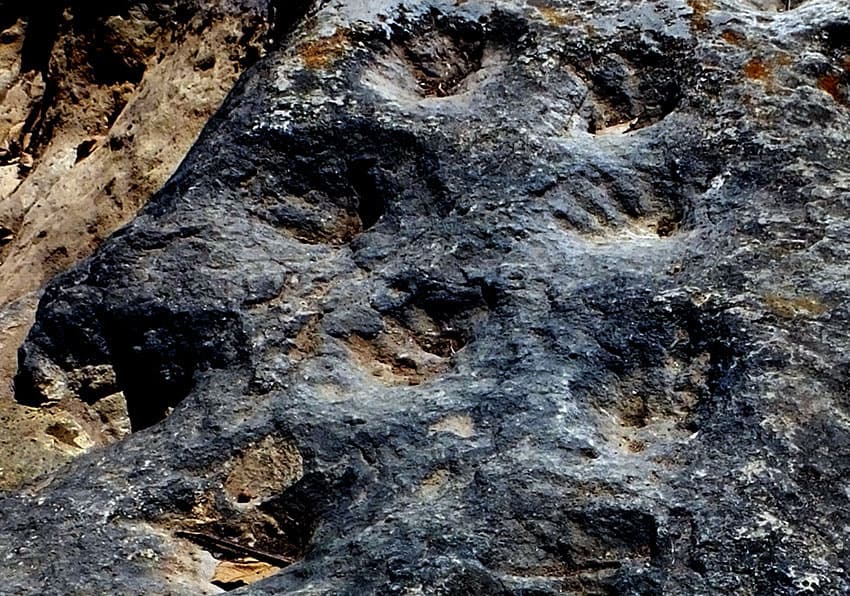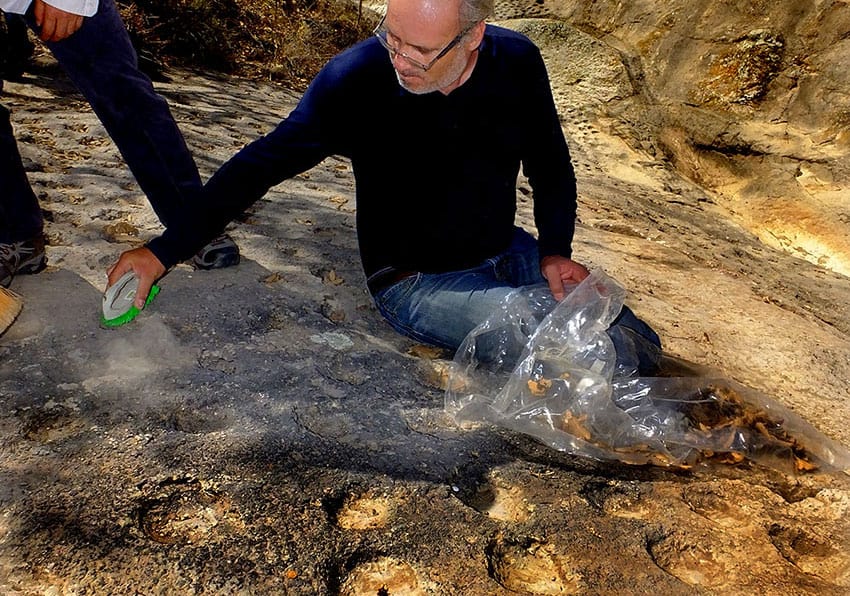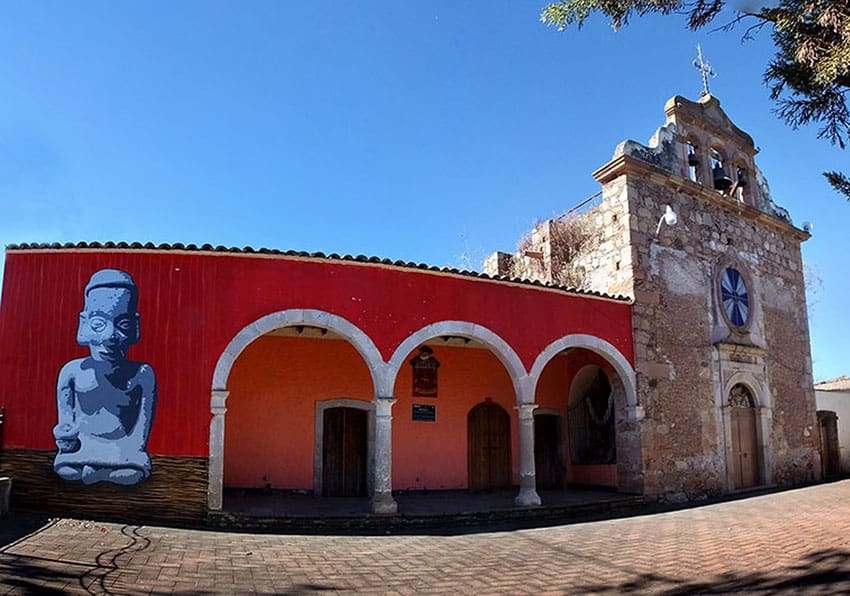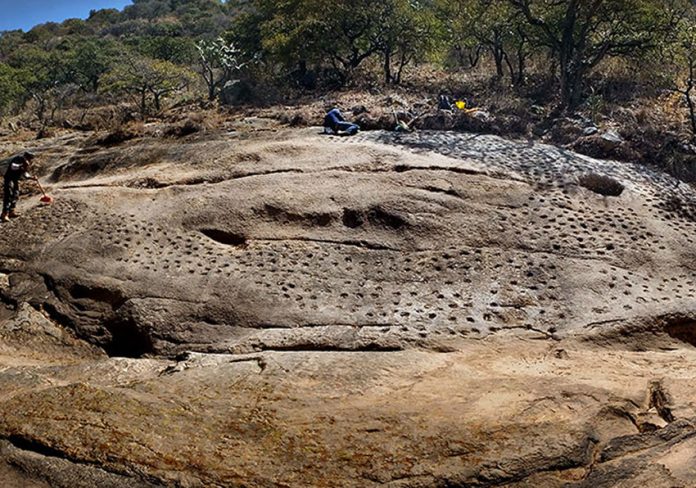Jalisco archaeologists keep digging up strange, new — and at the same time very old — things in the vicinity of the town of Arandas, located almost exactly 100 kilometers due east of Guadalajara.
First there was the discovery of more than 1,200 often very complicated horizontal petroglyphs along the shores of a small lake east of Arandas called Presa de la Luz, suggesting that the site may have been used as an astronomical observatory over a thousand years ago.
These discoveries are described in an elegant, 154-page coffee-table book entitled El Santuario Rupestre de los Altos de Jalisco (The Rock-Art Sanctuary of the Jalisco Highlands).
One of the authors of the book, archaeologist Rodrigo Esparza, called me to describe a new and even more curious discovery, this one located only 14 kilometers north of Presa de la Luz.
“For the moment we are calling this site Los Pocitos, ‘The Little Bowls,’ and we’re going to go study the place next week. Want to join us?”

Well, I could hardly say no to an offer like that, and a week later Esparza drove me to a place called Sauz de Cajigal where we met with several other archaeologists, including two from Japan who have taken a great interest in the area around Arandas.
“Before the others arrive, I’d like you to have a look at the local museum,” said Esparza.
“Museum?” I queried. “I couldn’t even find Sauz de Cajigal on the map and there’s a museum here?”
Thus it was that I met Pancho Navarro, a local collector who, Esparza told me, “has managed to rescue countless artifacts that would otherwise have been spirited away to other countries. These range in age from very old pieces from 500 BC, found in shaft tombs, to artifacts from colonial times.”
Pancho took me on a quick tour of his museum, which is filled not only with artifacts like figurines, obsidian blades and pottery, but also faded photographs and posters, phonographs and typewriters, stuffed animals, life-size human figures and all sorts of items related to the Cristeros war.
I should mention, in addition, that every one of those items in the museum has a story, and that Don Pancho speaks English very well. On top of that he also sings in English. “Credence Clearwater Revival songs are my specialty,” he told me, “and I would be happy to sing a few for any of your readers.”

From the Sauz de Cajigal Museum we drove 10 kilometers and parked. “From here it’s all on foot,” the archaeologists told me.
We started up a slope covered with young agaves. carefully watching where we walked, because the needle-like tip of an agave leaf is coated with an irritant and once you’ve been stuck, you can expect pain for days.
Where the agaves ended, we came to the legendary “barbed-wire fence with which every adventure in Mexico begins.” Fortunately, right up against this particular fence there’s a stone wall, making it relatively easy to climb over.
Now that there were no more agaves underfoot, we had no problems to contend with except for thorn bushes with needles four centimeters long!
After walking about a kilometer, we found ourselves on top of a ridge overlooking a long ravine. “Teruaki Yoshida is down there with another team,” Esparza told me. “He’s from Tokai University in Japan and he’s investigating a shelter cave in that ravine known as La Cueva del Raso. Although El Raso was a bandido, this cave’s treasure is not the monetary kind.
“On the wall, there’s a set of petroglyphs: geometric figures, like spirals. What’s unusual — in fact possibly unique — about these figures is that they are not rock paintings but engravings. “All other cave art I’ve ever heard of,” said Esparza, “was drawn or painted, so we think these grabados are pretty important.”

We continued walking for a few minutes more and suddenly archaeologist Francisco Rodríguez put down the load of brooms he was carrying and shouted, “Welcome to Paleolithic Park!”
I shaded my eyes and looked into the flat river bed below us. Oh yes, now I could see them: hundreds of little dots stretching off into the distance. Then I blinked and looked down at my feet only to discover that the pocitos were right here in front of me as well. “Oh wow!” I said. “They’re everywhere!”
From this vantage point, I noticed that the plethora of dots followed a shape something like an upside-down Y. On close examination, I could see that each dot was really a little bowl or cup carved into the rock. Each small hole was about 11 centimeters in diameter and four to six centimeters deep. Almost everywhere they were neatly aligned in rows.
“Pocitos [little pits] like these are not uncommon in this area,” Esparza told me, “but normally you see only one or two, always carved more carefully than here, with a nicely rounded bottom. As for their age, perhaps they probably date back to sometime between 900 and 1200 AD. We think the stone bowl is a prayer for rain, just like the spirals you find all over the world. An isolated bowl we understand, but this,” he said gesturing,”this is something else. Here what count are numbers.”
Esparza was hoping that today’s project, photographing the 400-meter stretch of little cups from a drone and capturing precise data about them with LIDAR (Laser Imaging Detection and Ranging) technology, might reveal something we had all missed, perhaps a shape that can only be appreciated when seen from far above, like the Nazca lines.
Which meant it was time to get to work, sweeping the whole area clean and brushing leaves and twigs out of each individual pocito, so the LIDAR would register a perfect record of what was carved in the rock.
[soliloquy id="91555"]
Cleaning out all those holes proved to be a long, slow job, but finally we finished it. Precise measurements were now taken with a special kind of ultra-precise GPS and reference points were chalked on the rock.
Meanwhile, with no more bowl cleaning to be done, I wandered down to the far end of the 400-meter-long stretch of pocitos and began counting them, just for the fun of it. Well, what I was doing was more estimating than counting, but I kept at it and in the end reached a grand total of 1.792 little holes.
Then, when everything was ready, the archaeologists started shouting, “Clear the area! Everybody out!” and the drone rose into the air and began to create its precise and detailed map of the now spotless pock-marked river bank. Once I had this map in hand at home, I did a recount of the holes and came out with 1,803 bowls carved in stone.
The area around Arandas now had three unusual archaeological sites: the 1,200 horizontal petroglyphs around Presa de la Luz, the engravings inside La Cueva del Raso and the nearly 2,000 (according to me) carved bowls at Los Pocitos.
Without a doubt, this little corner of Jalisco is destined for fame in the annals of archaeology. At the moment, it’s quite complicated to visit any of the sites I’ve described here, but I suspect that will not be the case for long.
The writer has lived near Guadalajara, Jalisco, for more than 30 years and is the author of A Guide to West Mexico’s Guachimontones and Surrounding Area and co-author of Outdoors in Western Mexico. More of his writing can be found on his website.
